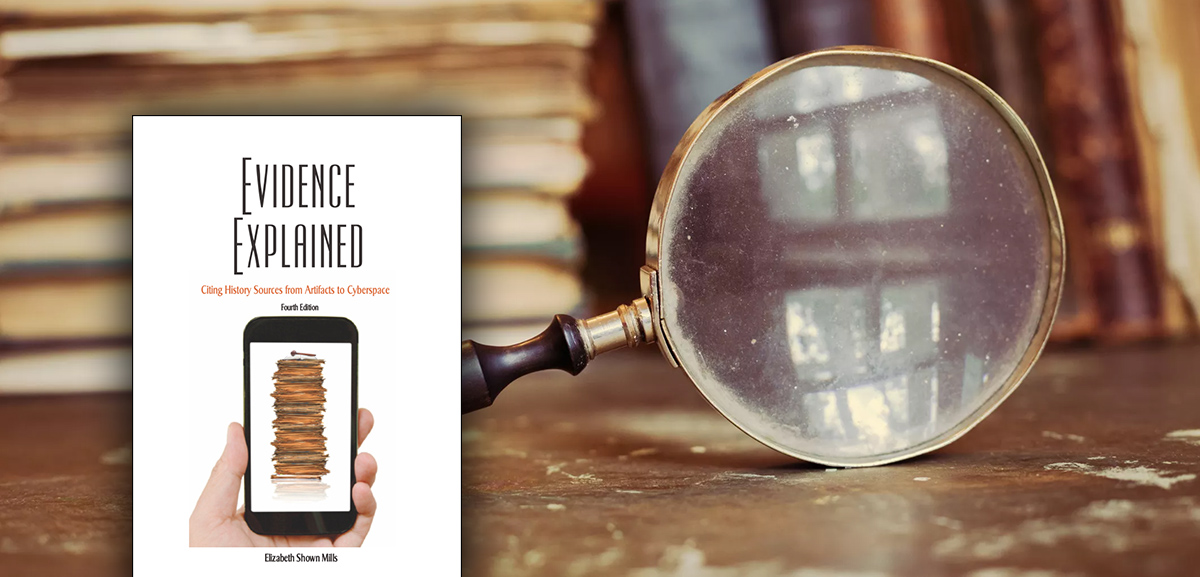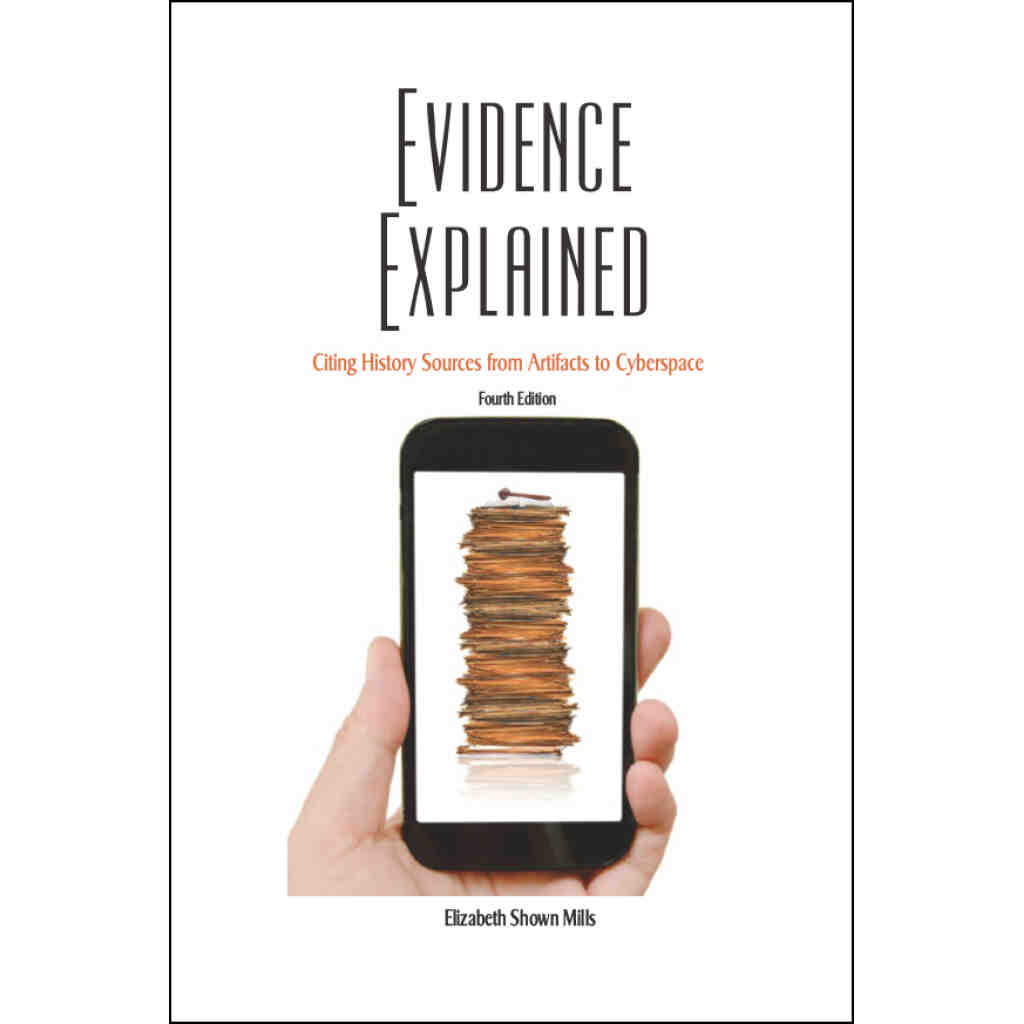
Author Elizabeth Shown Mills Talks About the New Fourth Edition of Evidence Explained: Citing History Sources from Artifacts to Cyberspace – By: Elizabeth Shown Mills, CG, CGL, FASG
(View 4th Edition of Evidence Explained in Store)
The Information Age has created a Catch-22 for historians. Online, we can scour billions of documents from around the world. Images of priceless originals are instantly downloadable to our PCs, laptops, tablets, and phones. Travel to archives, for long slogs through dusty boxes of record bundles tied in faded ribbons, is a fading memory for many researchers and an experience totally unfamiliar to millions of others.
We do pay a price for this convenience, however. Those online records are delivered to us through a maze of formats. Many are rearranged in ways that obscure their identity and origin. Others undergo processes that alter their reliability or omit valuable content. Websites themselves are here today and gone tomorrow. Even sites by major archives and commercial providers are revamped so frequently that documents can be difficult to relocate from the URLs, PALs, ARKs, paths, and breadcrumbs we recorded in past online forays.
EE’s new fourth edition tackles these challenges with a fresh approach. Without altering the formats and concepts that have served researchers well since 2007, EE4 introduces 14 universal templates we can use to cite every kind of source, no matter where it is archived or how we access it. Each of this edition’s 1000+ citation examples are keyed to a specific template.
A new tutorial, Building Your Citation, is designed especially for those who are baffled by conventional citations. This new Chapter 3 breaks down the citation process into a simple set of building blocks we can layer as needed for any kind of source worldwide, paper or digital.
In sum, our fourth edition offers:
- expanded emphasis on digitized materials
- expanded international coverage
- updated discussions of all aspects of source citation and analysis
- hundreds of new examples emphasizing modern modes of access, particularly the layered citations that modern media require
- 14 universal templates that replace and simplify the original 170 QuickCheck Models
If you have been intimidated by complex citations, we hope this new edition and its tutorial will help you overcome the biggest hurdle all researchers face. No, not finding records. The real hurdle is understanding the reliability of what we find and reporting our findings in a manner that is clear to us and others who use our work.
History is not a collection of raw facts we simply look up and copy down. That is why Evidence Explained differs radically from most citation manuals. Traditional guides emphasize output: the bare essentials needed at publication, to identify sources while minimizing publication costs. Evidence Style citations focus upon input: identifying the information researchers should record in the research stage—not just the basics for an eventual identification of the source but all the details essential to textual criticism, thorough analyses, and sound conclusions.




